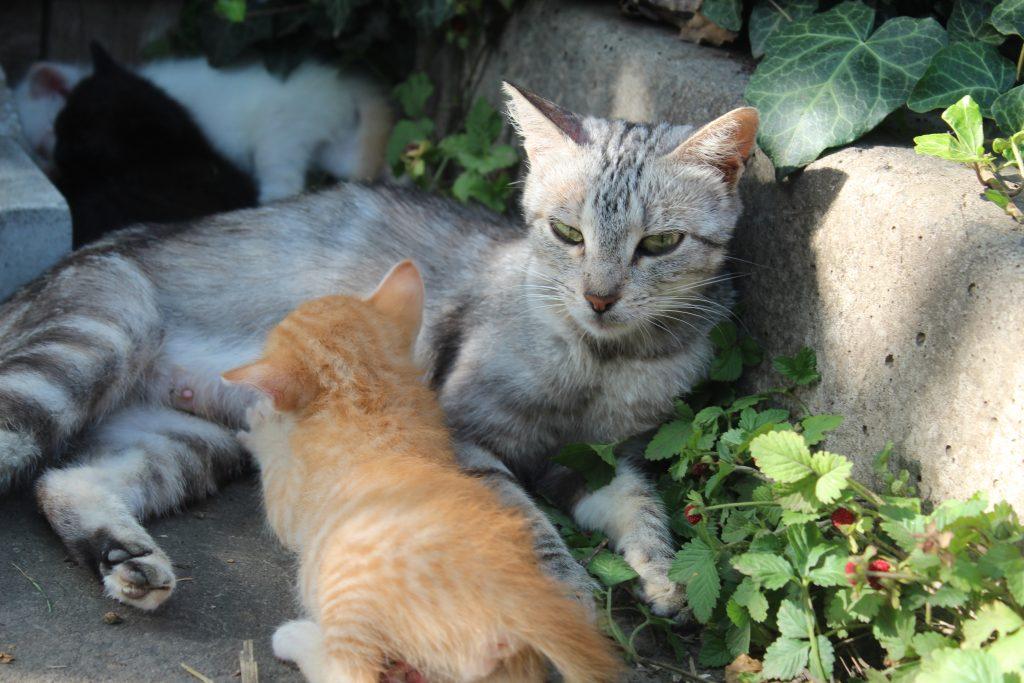Creating a nurturing environment for our feline friends is essential to their well-being, and one of the key factors in achieving this is understanding how much space cats really need. While it may seem that cats can thrive in any setting, the truth is that their natural behaviors and instincts heavily influence their spatial requirements. Whether you’re a new cat owner or looking to improve your current setup, knowing how to create a cat-friendly home involves more than just providing food and shelter.
In this article, we’ll explore the ideal living conditions for cats, delve into their territorial instincts, and offer practical tips for optimizing your space to ensure your kitty feels safe, stimulated, and content. Join us as we uncover the secrets to designing a home that not only accommodates your furball but also celebrates their unique personality!
Table of Contents
- Understanding Your Cats Natural Habitat
- Designing Vertical Spaces for Exploration
- Creating Cozy Retreats for Rest and Relaxation
- Incorporating Interactive Play Areas for Engagement
- Q&A
- To Wrap It Up
Understanding Your Cats Natural Habitat
To truly cater to your feline friend’s needs, it’s essential to consider their natural habitat. Cats are instinctual hunters and explorers, often found in areas that provide places to hide, climb, and stalk. Understanding these behaviors can help you create a space that mimics the safety and stimulation of their wild environment. When setting up your home, try to incorporate elements that allow your cat to engage in their natural instincts:
- Vertical Spaces: Install shelves or cat trees to give your pets a place to climb and survey their territory.
- Concealment Areas: Provide boxes or cat tunnels where they can retreat and feel secure.
- Interactive Toys: Use toys that promote hunting behaviors, such as feather wands or laser pointers, to keep them engaged.
Creating a cat-friendly environment isn’t just about ample floor space; it’s about enriching their life through thoughtful design. Different areas of your home can cater to various needs, allowing for both active play and restful retreats. Consider organizing these spaces according to your cat’s preferences and behaviors:
| Space Type | Purpose |
|---|---|
| High Perches | Observation and climbing |
| Sunlit Spots | Warmth and relaxation |
| Quiet Corners | Safe and secure hiding |
| Play Zones | Active daily exercise |
Designing Vertical Spaces for Exploration
Creating an environment that allows your feline friends to explore vertically can significantly enhance their quality of life. Cats are natural climbers and explorers, so incorporating vertical spaces into your home not only satisfies their instincts but also provides them with a sense of security and independence. To maximize vertical living, consider adding features such as:
- Cat Trees: These multi-level structures can be placed near windows or in quiet corners, providing your cat with a perfect vantage point.
- Shelves: Install sturdy shelves at varying heights to offer your cat different levels to leap and perch upon.
- Wall-Mounted Perches: These can create an airy and multi-dimensional space for your cat, allowing them to bask in the sun or observe their territory.
To ensure that your vertical spaces are both safe and appealing, it’s essential to consider your cat’s personality and preferences. Not all cats are fearless climbers; some may prefer lower heights while others will soar to the highest point. Crafting a combination of accessible options allows every cat to find their own cozy spot. Here’s a simple table to help you understand various climbing structures and their benefits:
| Structure Type | Benefits |
|---|---|
| Cat Tree | Multi-level play and scratch options |
| Shelves | Customizable heights and spacing |
| Cat Condos | Hideouts for shy or anxious cats |
Creating Cozy Retreats for Rest and Relaxation
Creating a welcoming and cozy space for your feline friend is essential in ensuring they feel secure and relaxed. Begin by designating quiet corners and warm nooks in your home where your cat can retreat when they need a break from the hustle and bustle. Consider incorporating soft bedding and blankets to make these spaces even more inviting. A small cat tree or hammock can also provide them with a perfect perch to observe their surroundings while staying comfortable. Make sure to elevate these retreats, allowing your cat to feel safe and in control of their environment.
In addition to personal spaces, think about adding a few elements that can contribute to your cat’s overall comfort and happiness. Here are some thoughtful ideas to consider:
- Cat Shelves: Install shelves at varying heights to encourage climbing and exploration.
- Window Perches: Create a spot for sunbathing and bird-watching.
- Calming Elements: Use pheromone diffusers or calming sprays to help reduce stress.
- Play Zones: Set aside an area with toys and scratching posts to keep your kitty entertained.
Integrating these features into your home design not only enhances the aesthetics of your space but also satisfies your cat’s instinctive needs. Use the following table to help visualize how to allocate different areas of your home for your cat’s enjoyment:
| Area | Purpose | Recommended Features |
|---|---|---|
| Living Room | Socializing & Playing | Cat tree, toys, cozy blankets |
| Bedroom | Resting & Sleeping | Soft bed, climbing shelf |
| Window Sill | Observation & Sunbathing | Window perch, plants |
Incorporating Interactive Play Areas for Engagement
Creating interactive play areas within your home is essential for promoting your cat’s physical and mental well-being. Cats are naturally curious and playful creatures, and incorporating elements that encourage engagement can help satisfy their instincts. Consider adding perches, scratching posts, and hiding spots to allow your feline friend to explore and play. These features not only provide entertainment but also offer a sense of security and territory for your cat. Engaging with your pet through playtime strengthens your bond and encourages healthy exercise, keeping them active and preventing boredom-related issues.
When designing these play areas, think about your cat’s preferences and behavior. Here are a few ideas to enhance their experience:
- Interactive Toys: Use toys that mimic hunting, such as feather wands or laser pointers, to stimulate their instincts.
- Obstacle Courses: Create a mini agility course with tunnels, ramps, and platforms to challenge their agility.
- Multi-Level Structures: Invest in cat trees or shelves to provide vertical space for climbing and resting.
For a more structured approach, consider dedicating specific zones in your home for play. Here’s a simple table layout to visualize how you can structure these spaces:
| Zone | Features | Purpose |
|---|---|---|
| Living Room | Cat tree, scratching post | Climbing and scratching |
| Bedroom | Interactive toys, plush beds | Resting and playful interaction |
| Hallway | Tunnels, small obstacles | Exercise and exploration |
Q&A
Q&A:
Q1: How much space do cats actually need to thrive?
A1: While cats can adapt to various living situations, they generally do best in a space that allows them to exhibit natural behaviors. Ideally, each cat should have at least 18 square feet of personal space to roam, play, and rest. This includes areas for climbing, scratching, and hiding, all of which contribute to their physical and mental well-being.
Q2: What are some essential elements for a cat-friendly home?
A2: A cat-friendly home should include vertical spaces like shelves or cat trees for climbing, cozy hiding spots such as caves or boxes, and scratching posts to satisfy their instinct to scratch. Additionally, providing access to windows can enrich their environment with sights and sounds, making them feel more connected to the outside world.
Q3: Can cats live comfortably in small apartments?
A3: Absolutely! Many cats thrive in small apartments as long as their environment is enriched. Utilize vertical space by installing shelves or tall cat trees, and ensure there are plenty of interactive toys. Regular playtime and mental stimulation are key to keeping your cat happy and healthy, regardless of the size of your living space.
Q4: How can I create a more stimulating environment for my cat?
A4: To create a stimulating environment, mix up your cat’s toys regularly and introduce puzzle feeders to engage their minds during mealtime. Consider creating window perches for bird-watching and rotating different items in their space every few weeks to maintain interest. You can also engage in interactive play with feather wands or laser pointers to keep them active.
Q5: What if I have multiple cats? Do they require more space?
A5: Yes, multiple cats will need more space to prevent territorial disputes and maintain harmony. A good rule of thumb is to provide around 18 square feet for each cat, with additional vertical spaces and resources like litter boxes, scratching posts, and feeding areas distributed throughout the home. This helps minimize stress and encourages healthy interactions.
Q6: How important is it to have different zones in the home for my cat?
A6: Very important! Creating different zones within your home can help cater to your cat’s various needs. For example, designate areas for play, rest, and feeding. Each zone should be tranquil and escape-friendly, providing your cat with options to retreat when they need some alone time. This zoning helps prevent stress and keeps your furry friend happy.
Q7: How can I assess whether my cat is comfortable in their space?
A7: Observe your cat’s behavior. A comfortable cat will explore their environment, engage in play, and demonstrate relaxed body language, such as kneading or stretching. If your cat hides frequently, exhibits signs of stress, or seems uninterested in activities they once enjoyed, it might be time to re-evaluate their space and enrichment options.
Q8: Can outdoor access improve my cat’s quality of life?
A8: Yes, supervised outdoor access can significantly enhance a cat’s quality of life by providing fresh air, new sights, and scents. Consider installing a secure catio (cat patio) or using a harness and leash for outdoor exploration. Always ensure their safety, as outdoor environments can pose risks, like traffic or predators.
Q9: How often should I re-evaluate my cat’s space needs?
A9: Regularly re-evaluate your cat’s space needs, especially if there are changes in their behavior, lifestyle, or if you have moved to a new home. Cats can be sensitive to changes, so keeping an eye on their comfort and adjusting their environment as necessary will help them adapt and thrive.
Q10: Where can I find more resources for creating a cat-friendly home?
A10: There are plenty of resources available online, including websites dedicated to pet care, local animal shelters, and veterinary offices that often provide tips and guidelines. Books on cat behavior and care can also offer valuable insights into making your home more cat-friendly and ensuring your feline friend lives a happy, enriched life.
To Wrap It Up
creating a cat-friendly home is all about understanding your feline friend’s needs and tailoring your space to accommodate them. While cats are often seen as low-maintenance pets, they require ample room to explore, play, and express their natural behaviors. By providing vertical spaces, cozy nooks, and stimulating environments, you can ensure your cat feels secure and content in their home.
Remember, every cat is unique, so take the time to observe your pet’s habits and preferences. Whether you have a small apartment or a spacious house, there are plenty of ways to enhance your living space for your furry companion. Embrace your creativity and customize your home to foster a happy, healthy lifestyle for your cat.
Thank you for joining us on this journey to create a nurturing environment for your beloved pet. Happy decorating, and may your home be filled with joy, comfort, and lots of playful moments!

















